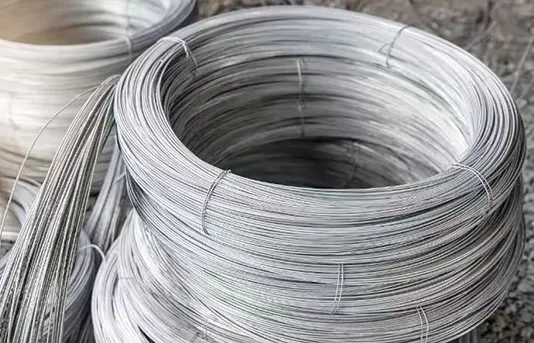-
 Phone:
Phone: -
 Email:
Email:

Durable Galvanized Wire for Effective Baling and Securing Materials in Various Applications
Galvanized Baling Wire An Essential Tool for Agriculture and Recycling
In today's world, the importance of efficient waste management and sustainable agricultural practices cannot be overstated. Among several tools that play a crucial role in these sectors, galvanized baling wire stands out for its versatility and durability. This article delves into the features, applications, and advantages of galvanized baling wire, emphasizing its significance in both agriculture and recycling industries.
What is Galvanized Baling Wire?
Galvanized baling wire is steel wire that has undergone a galvanization process to enhance its resistance to rust and corrosion. This process involves coating the wire with a layer of zinc, which serves as a protective barrier against environmental elements. Available in various gauges and lengths, galvanized baling wire is specifically designed to bundle materials tightly, making it an essential component in baling operations.
Applications in Agriculture
In the agricultural sector, galvanized baling wire is primarily used for securing bales of hay, straw, or other crops. Farmers and producers rely on this wire to create compact bales that are easier to transport and store. The strength and durability of galvanized wire ensure that bales remain intact during handling, reducing the chances of loss and spoilage.
Moreover, galvanized baling wire is resistant to moisture, making it ideal for outdoor use. Farmers can trust that their bales will stay secure, even in adverse weather conditions. Additionally, the wire is easy to work with, enabling quick and efficient bundling, which is especially beneficial during peak harvest seasons.
Role in Recycling
galvanized baling wire

In the recycling industry, galvanized baling wire is instrumental in the process of waste management. As recyclables such as plastics, cardboard, and metals are collected, they often need to be bundled before being transported to recycling facilities. Galvanized baling wire is used to create secure, manageable bundles, ensuring that the materials do not get scattered or damaged during transit.
The use of galvanized baling wire in recycling promotes efficiency and sustainability. By securely binding recyclable materials, users can maximize space during transportation and minimize the overall carbon footprint associated with waste management. Furthermore, the longevity of galvanized wire means that it can be reused multiple times before needing replacement, enhancing its eco-friendliness.
Advantages of Using Galvanized Baling Wire
One of the most significant advantages of galvanized baling wire is its impressive strength-to-weight ratio. It offers robust support without adding excessive weight, which is particularly beneficial in agricultural and recycling applications. Additionally, the galvanized coating ensures that the wire retains its structural integrity over time, even when exposed to harsh environmental conditions.
Another advantage is the cost-effectiveness of galvanized baling wire. While initial purchasing costs may vary based on gauge and length, the long lifespan and minimal maintenance required make it a economical option in the long run. Producers and recycling facilities can rely on this economical solution for their bundling needs without incurring frequent replacement costs.
Conclusion
Galvanized baling wire is a vital tool that supports agricultural productivity and efficient recycling practices. Its remarkable strength, corrosion resistance, and versatility make it an indispensable resource in managing crops and waste. As both sectors increasingly prioritize sustainability, the role of galvanized baling wire becomes even more crucial. By adopting this essential tool, farmers and recyclers alike can contribute to a more sustainable future while optimizing their operations.
-
Wire Mesh for Every Need: A Practical SolutionNewsJul.25,2025
-
Steel Fences: Durable, Secure, and Stylish OptionsNewsJul.25,2025
-
Roll Top Fencing: A Smart Solution for Safety and SecurityNewsJul.25,2025
-
Cattle Farm Fencing Solutions for Maximum SecurityNewsJul.25,2025
-
Affordable Iron Binding Wire SolutionsNewsJul.25,2025
-
Affordable Galvanized Wire SolutionsNewsJul.25,2025
-
Wire Hanger Recycling IdeasNewsJul.25,2025








